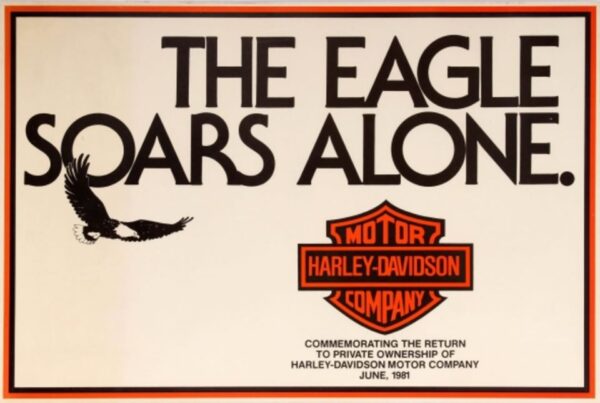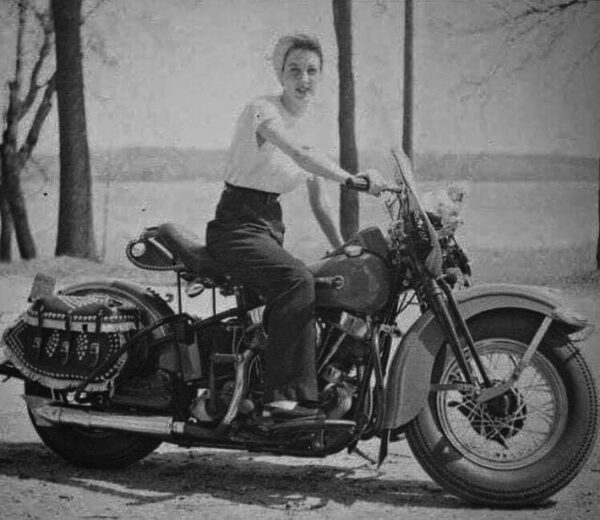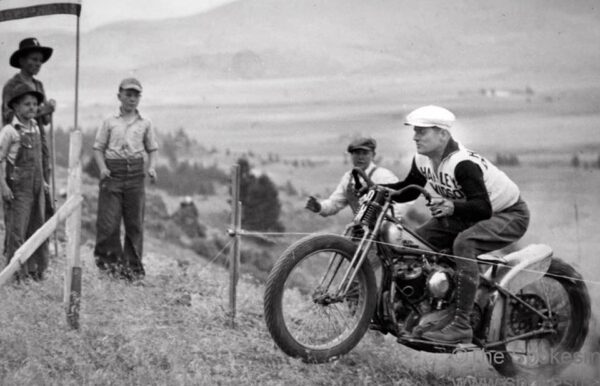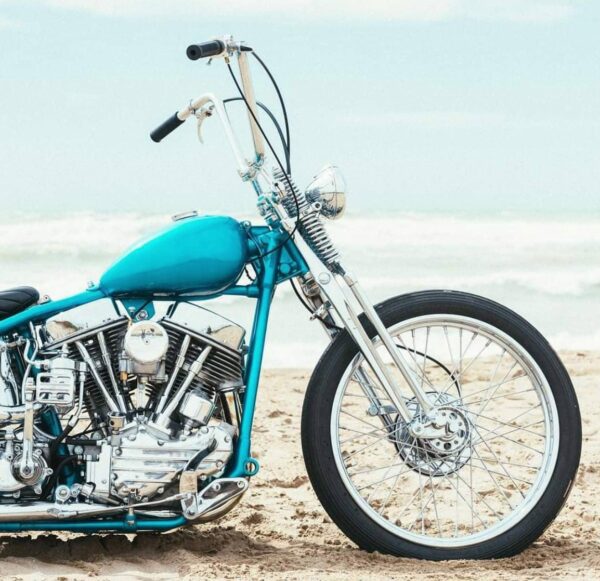Lowered Harley-Davidson Greyhead
By Wayfarer |
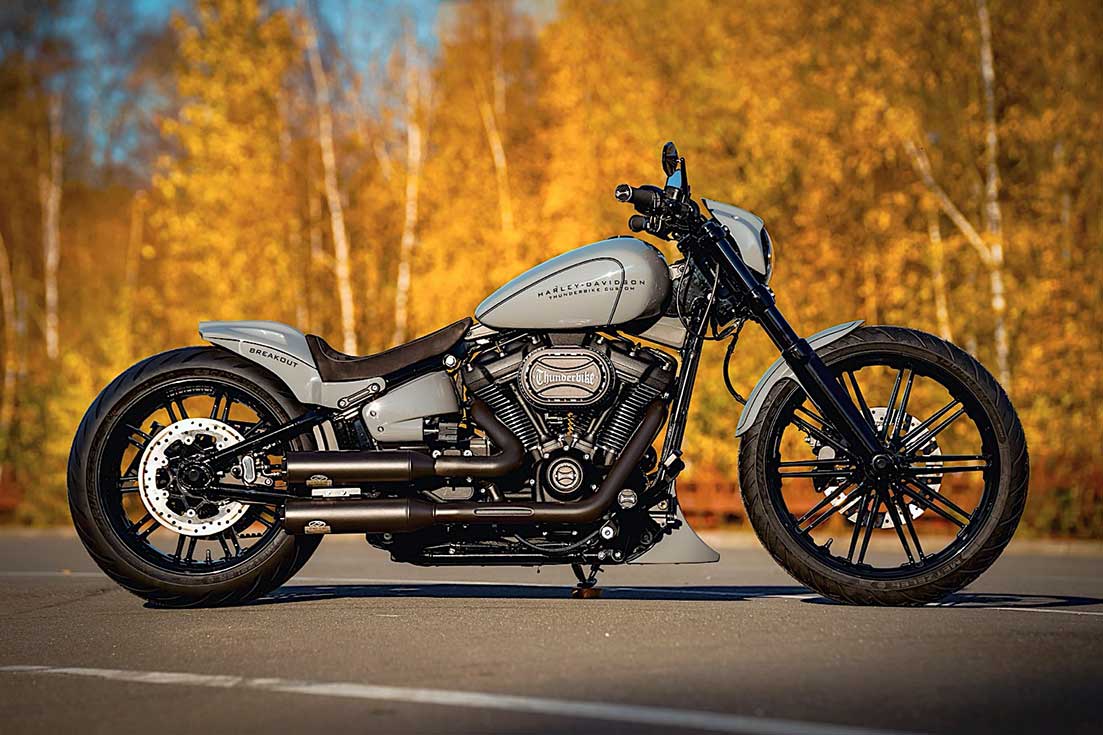 by Daniel Patrascu from https://www.autoevolution.com
Audi is famous for a lot of things: it is known for things like quattro, or the high-powered stations wagons it makes, but also for something that’s a lot more visible, a special shade of gray called nardo gray.
The shade, or variants of it, is not exclusive to Audi, and was used over the years, including as an aftermarket choice, on a number of cars, but people generally associate it with the four-ringed brand. Just type in the Google search bar nardo gray, and see what suggestions are made.
And yes, there are bikes wrapped in it as well.
Take the Germans from Thunderbike, an unstoppable garage in the business of remaking Harleys. They used nardo gray on a number of their projects, and we must say, the color looks right at home on the limited real estate provided by a motorcycle’s body.
Case in point, the Fat Boy Solid Dude they got out last summer. Or this here Greyhead, one of their even more recent releases. Once a Breakout, it got extensively changed, with the addition of some 30 custom parts and no-nonsense use of nardo gray on the headlamp fairing, fuel tank, rear fender, and elsewhere, combined with black on most of the other parts.
The new visual impact achieved with the paint is boosted by the lower stance, made possible by the use of a Stage 2 lowering kit, which brings the two-wheeler down by 30 mm.
As said, over 30 custom parts were used to make this, most of them of the German’s own design, including the headlamp, and covers where covers are due.
The entire affair cost around 7,000 euros ($8,500) to put together, but that does not include the base bike, the exhaust system, man-hours that went into it, and probably a host of other parts we’re not told anything about.
by Daniel Patrascu from https://www.autoevolution.com
Audi is famous for a lot of things: it is known for things like quattro, or the high-powered stations wagons it makes, but also for something that’s a lot more visible, a special shade of gray called nardo gray.
The shade, or variants of it, is not exclusive to Audi, and was used over the years, including as an aftermarket choice, on a number of cars, but people generally associate it with the four-ringed brand. Just type in the Google search bar nardo gray, and see what suggestions are made.
And yes, there are bikes wrapped in it as well.
Take the Germans from Thunderbike, an unstoppable garage in the business of remaking Harleys. They used nardo gray on a number of their projects, and we must say, the color looks right at home on the limited real estate provided by a motorcycle’s body.
Case in point, the Fat Boy Solid Dude they got out last summer. Or this here Greyhead, one of their even more recent releases. Once a Breakout, it got extensively changed, with the addition of some 30 custom parts and no-nonsense use of nardo gray on the headlamp fairing, fuel tank, rear fender, and elsewhere, combined with black on most of the other parts.
The new visual impact achieved with the paint is boosted by the lower stance, made possible by the use of a Stage 2 lowering kit, which brings the two-wheeler down by 30 mm.
As said, over 30 custom parts were used to make this, most of them of the German’s own design, including the headlamp, and covers where covers are due.
The entire affair cost around 7,000 euros ($8,500) to put together, but that does not include the base bike, the exhaust system, man-hours that went into it, and probably a host of other parts we’re not told anything about.Vance & Hines Launches New Four-Valve Suzuki Racing Engine
By Wayfarer |
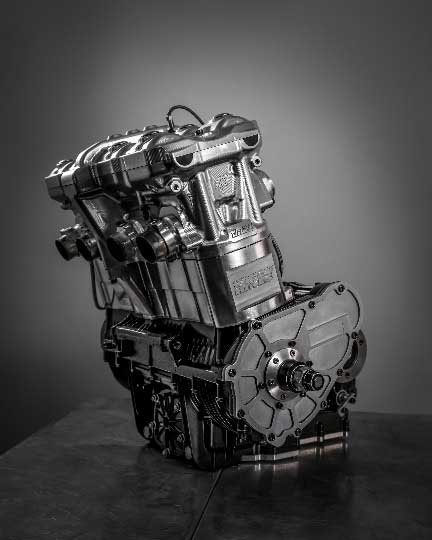
Racing Applications include Pro Stock, Pro Mod and Pro Street Classes
February 1, 2021 – Santa Fe Springs CA – Vance & Hines today launched the company’s long-expected four-valve motor for Suzuki GS-based drag racers. The new powerplant will debut at the NHRA Gator Nationals in Gainesville FL in mid- March. Several teams will be competing with the new Suzuki-based motor and a new Vance & Hines-designed chassis at that event.
“The scale of this launch is unprecedented in the drag racing world and it highlights our company’s technical capabilities,” said Vance & Hines President Mike Kennedy. “This engine and the cylinder head design are applicable to several racing classes and easily adaptable to every team that is currently running a two-valve Suzuki GS. This launch is a proud moment for Vance & Hines and hopefully will net many victories for our Suzuki riders in 2021 and beyond.”
The new four-valve head modernizes the technology in Suzuki drag racing motors. It replaces the two-valve design which was introduced in 1998 and it retains the 1850 cubic centimeters engine displacement.
For the first time, Vance & Hines has integrated finger follower technology rather than a shim-under-bucket design in a drag racing cylinder head, which allows for less mass in the valve train and increased RPM.
The intake and exhaust port spigots are modular, so they can be adapted to different air boxes and exhaust pipes without redesigning or remanufacturing the head itself. This allows the new head to be used not only in NHRA’s Pro Stock Motorcycle class, but also in the Pro Mod and Pro Street classes.
Design credit for the motor, code named “VHIL18504V,” goes to six-time NHRA champion Andrew Hines. The head was completely developed in Solid Works CAD design and was a fully functional running model prior to production.
“The 1850cc motor is approaching nearly 400hp and we believe that this is just the start of a new era of Suzuki drag racing championships,” said Andrew Hines. “Right now, this four-valve design is more powerful than the best of our two-valve motors. And there’s room to get better and faster with this architecture.”
Vance & Hines is the preferred provider of racing equipment for many teams in drag racing. The company is known for fully supporting customers by having all the necessary components in stock and available for racing teams. Currently Vance & Hines is taking orders for complete motors or individual cylinder head packages. The new chassis, which leverages the learnings from thousands of runs in NHRA competition, is available as well.
AMA LEGISLATIVE NEWS UPDATE
By Bandit |
|
|
The Motorcycle Australian Exhibit
By Wayfarer |
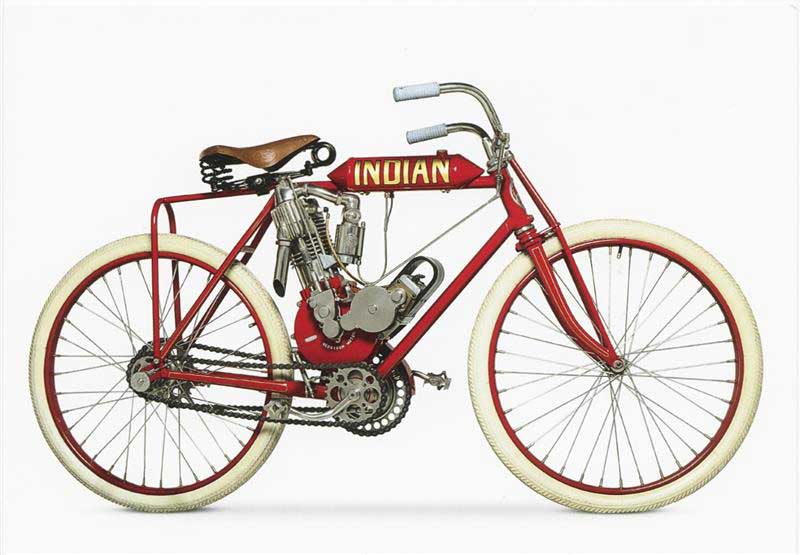
Passion, Desire and Action
Curated by US-based design curator and physicist Professor Charles M Falco and writer and filmmaker Ultan Guilfoyle in collaboration with QAGOMA
Brisbane’s Gallery of Modern Art (GOMA) opens the world exclusive exhibition ‘The Motorcycle: Design, Art, Desire’ tomorrow, featuring 100 exceptional motorcycles from the 1870s to the present.
Queensland Art Gallery, Gallery of Modern Art (QAGOMA) Director Chris Saines said ‘The Motorcycle’, showing until 26 April, 2021 celebrates 150 years of motorcycle history and included multiple interactive experiences for all ages.
‘Curated by US-based design curator and physicist Professor Charles M Falco and writer and filmmaker Ultan Guilfoyle in collaboration with QAGOMA, the exhibition features pioneering motorcycles and classic commuters, off-road bikes and speed machines, as well as custom creations and numerous electric bikes heralding the future,’ Mr Saines said.
Click Here to Read this Photo Feature on Bikernet.
Join the Cantina – Subscribe Now.
https://www.bikernet.com/pages/custom/subscription.aspx
Is This Patented Simulator The Future Of Motorcycle Testing?
By Wayfarer |
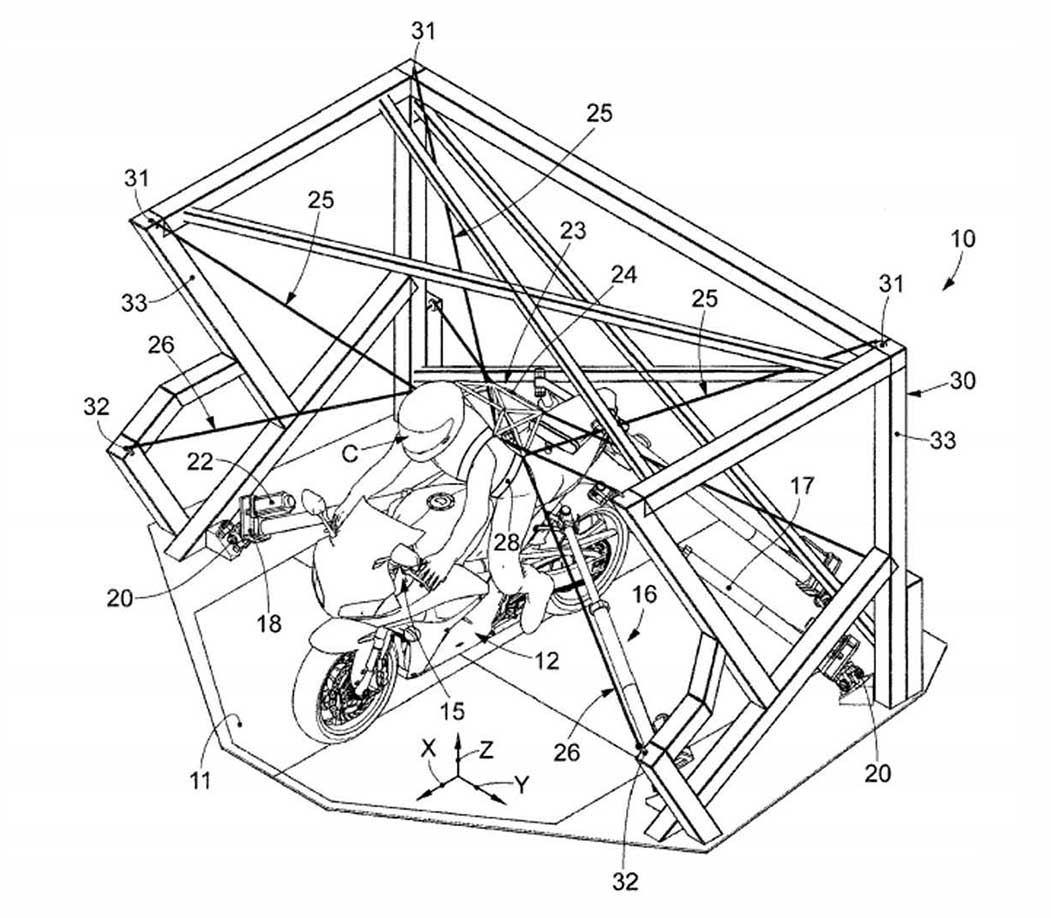
by Sabrina Giacomini from https://www.rideapart.com
When we think of motorcycle riding simulators, we usually think of video games. The closest you can get to the real deal, however, is by hitting the arcades and getting in the saddle of one of those plastic replicas attached to the Superbikes games that only lean at a 70-degree angle.
Italian firm Mototrainer took things a step further with its simulator, allowing gamers and pro racers alike to attach their bike to a sort of tipping platform that allow riders to lean the bike safely. All you need is a big enough screen to make you believe you’re there. Now, driving simulator specialist Vi-Grade is taking things up a notch with its version of a motorcycle simulator and the Germans aren’t messing around.
The contraption places the bike inside a cube-shaped frame attached to six seemingly hydraulic arms that allow the bike to tip without falling. The system also includes a sort of harness worn by the rider and attached to the frame using cables, a design meant to mimic the forces exerted on the body while riding (being pulled backward during acceleration, for instance).
According to Bike Social, the system would have a more commercial/professional application rather than a personal one. The U.K. publication suggests that the system could be used by manufacturers to test their new products, for instance, or by pro racers to get some practice in off the track.
While the company specializes in advanced simulators, there’s nothing in Vi-Grade’s patent that suggests a customer couldn’t get their hands on one provided they have the space and the funds for the setup that likely won’t go for cheap. After all, it does make a desktop automotive racing set up complete with steering wheel and pedals which suggests that they do sell directly to customers and not only to businesses.
Though Vi-Grade already offers several simulation solutions, this complex apparatus is only at the stage of patent. For now. Maybe we’ll one day see a press release announcing a new motorcycle with pictures of the bike fitted in the Vi-Grade simulator as part of the “behind the scenes”.
New VA Program Investigates Outdoor Therapy For Veterans
By Bandit |
by Dustin Jones, NPR
Getting into shape traditionally tops many people’s lists when it comes to New Year’s resolutions. But after a tumultuous past year, focusing on mental health needs is also important. Recently passed legislation aims to help America’s military veterans with both.
Last month, President Trump signed the Accelerating Veterans Recovery Outdoors Act after it easily passed in Congress in a rare instance of bipartisan support, as part of a package called the Veterans COMPACT Act of 2020.
Among other things, the new legislation calls on the Department of Veterans Affairs to implement programs and policies related to transition assistance, suicide care, mental health education and treatment. More specifically, it requires the VA to establish a task force to investigate the benefits of outdoor recreation therapy for veterans.
In the not-too-distant future, struggling veterans could be prescribed outdoor activities as treatments; a welcome alternative to pharmaceuticals or a more traditional approach to therapy.
Former Navy SEALs Dustin Kisling and Josh Jespersen helped champion the new law. Starting from the ground up, they reached out to friends, family, colleagues and fellow veterans alike, urging them to contact members of Congress to help push passage of the bill.
The potentially life-saving legislation, Kisling explains, was just too important to fail.
“If something like this gets enacted and they recognize the outdoor therapeutic approach, it has the potential to make great changes,” he says. “If advancing this option can save one life, then I’m passionate about it.”
A 2020 study conducted by the Department of Veterans Affairs found that an average 17 veterans died by suicide every day in 2018 — more than 6,400 a year.
In 2019, Kisling and Jespersen founded the Veteran’s Outdoor Advocacy Group, promoting outdoor therapy as a recognized and legitimate form of treatment for veterans.
“I’d love to see an end to veteran suicide, but I don’t know that’ll happen. I view this as a way of making an impact on brothers and sisters,” Kisling says.
In Jackson, Wyo., former Navy corpsman Cam Fields has pioneered something he calls shred therapy. Fields is the founder and CEO of Front Country Foundation, a non-profit that teaches veterans how to safely access the mountains on skis and snowboards. But he isn’t selling anything. Front Country Foundation provides a skill set for veterans overcoming traumas.
“I’m not in the business of hosting ski trips, this is a tool,” he says. “I want these guys to be able to go home and do this on their own or with their group and feel safe and good about what they’re doing. Giving them the tools to go home and deal with whatever they’re going through.”
At the moment, Fields can only accommodate so many veterans over the course of the winter. When the foundation’s funds dry up, he pays for expenses out of pocket. Flying veterans to Wyoming and working with them on his own dime in hopes they will return home a little better than when they arrived.
A 2019 study by the National Institute on Drug Abuse estimates 37 to 50% of Iraq and Afghanistan veterans have been diagnosed with a mental disorder. Unfortunately that often leads to self-medication. More than one-in-ten veterans have a substance abuse problem.
If the VA’s task force finds promising results while exploring outdoor recreation therapy, costs for participation in programs such as Front Country Foundation could be covered. No different than paying for a prescription, Fields explains.
“What we are hoping to see is it becomes more of a thing so vets don’t feel pressured to take a pharmaceutical,” Fields said.
“A lot of people just think of therapy as siting in an office, but you can get outside, bike, climb, ride. It’s just, not being confined in four walls,” he says, advising, “Let your mind and soul breathe.”
Then Motorcycling, motorcycle racing and building motorcycles fits in perfectly!–Bandit
WindVest Pre-Season Sale
By Wayfarer |
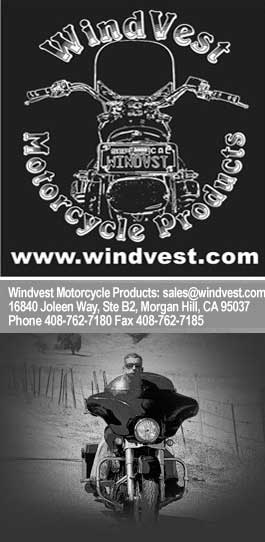
Calling all Dealers
Pre-Season Sale
Feb 1 – 28, 2021
Stock up on all things WindVest before the riding season begins.
Save 10% on all items ordered between February 1st and February 28th, 2021.
Free shipping on orders over $500.
WindVest Motorcycle Products
www.windvest.com
sales@windvest.com
408-762-7180 local
877-370-7326 toll free
The MOTORCYCLE Australian Exhibit
By Bandit |

Brisbane’s Gallery of Modern Art (GOMA) opens the world exclusive exhibition ‘The Motorcycle: Design, Art, Desire’ tomorrow, featuring 100 exceptional motorcycles from the 1870s to the present.
Queensland Art Gallery, Gallery of Modern Art (QAGOMA) Director Chris Saines said ‘The Motorcycle’, showing until 26 April, 2021 celebrates 150 years of motorcycle history and included multiple interactive experiences for all ages.
‘Curated by US-based design curator and physicist Professor Charles M Falco and writer and filmmaker Ultan Guilfoyle in collaboration with QAGOMA, the exhibition features pioneering motorcycles and classic commuters, off-road bikes and speed machines, as well as custom creations and numerous electric bikes heralding the future,’ Mr Saines said.

‘The exhibition has a green screen motorcycle riding experience, a motorcycle design studio for building and customising virtual bikes, and a mobile companion site which enables audiences to navigate the show and dive deeper into the history and stories behind each bike on display.
‘This is a must-see experience for bike and motor sport enthusiasts, and it’s equally accessible for anyone with a love of popular culture, design, technology and social history,’ Mr Saines said.
‘The Motorcycle’ will be accompanied by virtual talks and tours, storytelling events, trivia nights, and ‘Motorcycles on the Green’ on 27 February and 18 April 2021, featuring over 60 motorcycles from local community groups, live custom bike builds, DJs and more.
Minister for the Arts Leeanne Enoch said ‘The Motorcycle: Design, Art, Desire’ was the first major exhibition to motor into QAGOMA since COVID-19.
‘As of last week, Queensland is the first state in Australia to open our cultural venues to significantly more visitors,’ Minister Enoch said.
‘This is a testament to the achievement of all Queenslanders who have listened to and followed the health advice.

‘The exhibition will be a drawcard for local visitors as well as those who are taking the opportunity to explore our state, that is now open for business,’ she said.
‘The Palaszczuk Government investment of nearly $60 million, including the $22.5 million Arts and Cultural Recovery Package, is vital in sustaining the sector, supporting new work, re-opening our cultural venues, delivering digital programming and supporting COVID-safe audience experiences across the State.’
‘The Palaszczuk Government’s blockbuster funding for QAGOMA provides funding of $4 million over two years (2019–2020 and 2020–2021) to support exclusive exhibitions like this in Queensland, revving up our reputation as a must-see visual arts destination.’

On 19 and 20 March 2021, Up Late returns to GOMA for an after-hours celebration of ‘The Motorcycle’ and live music performances across two jam-packed nights.
Co-curator of the exhibition Professor Charles M Falco said ‘The Motorcycle’, presented across GOMA’s entire ground floor, would feature bikes ranging from the steam-powered 1871 Perreaux Vélocipède, the world’s first motorcycle designed by Louis-Guillame Perreaux, to the electric-powered 2020 Savic C-Series Alpha, from Australian automotive designer Dennis Savic.
_1920_ClydeCrouch_rlaprelle_phaidon_001.jpg)
‘The show encompasses the span of motorcycle history, design and capability, from steam power, through internal combustion engines, and into the future with electric motors. Among the highlights are impressive speed machines, such as a Burt Munro 1920 Indian Streamliner, a record setting 1951 Vincent Black Lightning, an original 1974 Ducati 750SS and a rare 1994 Britten V1000, created by legendary New Zealand design engineer, John Britten. Sleek contemporary custom creations include Max Hazan’s 2016 ‘Black Knight’, Daryl Villenueva’s 2016 ‘Bandit 9 Eve Mk II’, Craig Rodsmith’s 2018 ‘Corps Léger’ and Bryan Fuller’s 2019 Moto ‘2029’,’ Professor Falco said.
Co-curator Ultan Guilfoyle said moving image was integral to the exhibition with many high definition video screens playing important examples of the motorcycle on film from the earliest days to the present.

‘The exhibition explores in depth the abstract world of avant-garde custom designs and includes the work of Australia’s leading motorcycle custom designer, Deus Ex Machina. It also highlights the important role gender has played in motorcycle history, with the inclusion of the Vespa and the Honda Cub, two bikes designed specifically with working women in mind, through to great objects of desire such as the Ducati Monster which was designed not only to look cool, but to be ridden easily by either men or women,’ Mr Guilfoyle said.
‘Motorcycles on Screen’ is the major film program of more than 50 titles showing at GOMA for the duration of the exhibition. The free program features films from the silent era through to the present including classics Roman Holiday 1953, The Wild One 1953, The Great Escape 1963, Easy Rider 1969, Terminator 2: Judgment Day 1991 and iconic Australian films Stone 1974, Mad Max 1979, Shame 1988 and Finke: There and Back 2018. Excerpts of many of these films along with rare archival footage and contemporary video artworks centred on the motorcycle will also punctuate each space in the exhibition.
Alongside ‘The Motorcycle’, some of Australia’s most acclaimed contemporary artists respond to the motorcycle helmet in ‘Full Face: Artists’ Helmets’. Artists who have customised helmets in their own distinct styles for the showcase include Archie Moore, Brian Robinson, Callum McGrath, David Booth (ghostpatrol), Eric Bridgeman and Alison Wei, eX de Medici, Guan Wei, Kate Beynon, Madeleine Kelly, Monika Behrens, Nell, Reko Rennie, Robert Moore, Shaun Gladwell and TextaQueen.

‘The Motorcycle’ is accompanied by a themed exhibition store retailing an exclusive range of Deus Ex Machina x QAGOMA t-shirts, totes, caps and badges and a major hardcover book co-published by Phaidon Press celebrating the history and future of the motorcycle. The image-rich 320-page publication can be purchased at the GOMA Store or online at www.qagoma.qld.gov.au/store.
For more information on the extensive public programs accompanying ‘The Motorcycle: Design, Art, Desire’ or to secure your tickets to the exhibition please visit www.qagoma.qld.gov.au/themotorcycle.
‘The Motorcycle: Design, Art, Desire’ is supported by the Queensland Government through Tourism and Events Queensland and features on the It’s Live! in Queensland events calendar.

TICKETS
THE MOTORCYCLE
DESIGN, ART, DESIRE
28 NOV 2020 – 26 APR 2021
GOMA | GALLERY 1.1 THE FAIRFAX GALLERY, GALLERY 1.2, GALLERY 1.3 ERIC & MARION TAYLOR GALLERY | TICKETED
Discover a whole new perspective of The Motorcycle.
Get your motor running… ‘The Motorcycle: Design, Art, Desire’ opens the throttle on the ground-breaking designs that shaped one of the most iconic objects the world has ever seen.
Featuring radical concepts, record breakers and road icons, the fully-immersive exhibition showcases 100 of the greatest motorcycles ever assembled.
Show off your ride with #MotorcycleGOMA | Read more about the motorcycles
BUY TICKETS
Tickets are also available to purchase onsite between 10.00am – 4.15pm. Visit our ticket information page for details on ticket prices, accepted concessions, companion cards, season tickets etc.
This world-exclusive exhibition, only in Brisbane will showcase the art, design and history of one of the most iconic objects of the last 150 years, the motorcycle.
Featuring more than 100 innovative and influential motorcycles from the 1860s to present day, it will consider the iconic vehicle from the perspective of social history, popular culture, design and technology.
The exhibition will tap into the appeal of this enduring object of design and art, looking at the motorcycle’s past, present and future.

EXHIBITION OVERVIEW
The world’s first steam-powered ‘motorcycle’ was assembled in the late 1860s, more than a decade before the first automobile was designed, and by the early twentieth century all the elements of the modern, internal combustion engine-powered motorcycle had developed. Over the next 120 years, changes in design reflected developments in technology, engineering and manufacturing, as well as the motorcycle’s evolving functions as an inexpensive mode of transportation, racing and on- or off- road vehicle and as an expression of individual creativity. These innovations changed the face of transportation, and the motorcycle has not only become an enduring design icon, but also established its place in society through popular culture, literature and film.
This exhibition offers a rare opportunity to see geographically and historically diverse motorcycles together in one place. From the hubs of motorcycle manufacturing in the United Kingdom, the United States and Japan to less likely sources of unique designs in New Zealand and Australia, ‘The Motorcycle’ showcases a machine at the pinnacle of design excellence and evokes a world of innovation, excitement and desire.

EXHIBITION HIGHLIGHTS

When the first motorcycles appeared on roads at the end of the nineteenth century, it was inevitable riders would want to know whose bike went fastest, and who was the better, quicker rider. Thus, motorcycle sport was born and various forms of competition quickly developed – including road racing, cross-country, track racing and hill climbing – each prompting new and specialized motorcycle designs and configurations.
In 1907 a road race named the Isle of Man Tourist Trophy (TT) – a 60-kilometre, hair-raising race around the narrow roads and tiny villages of a remote island in the middle of the Irish Sea – was first run with racers touching speeds close to 100 miles (160 kilometres) per hour. This race has become the longest running road race in the world, and still occurs annually to this day.

As early as 1908, motorcycles such as the Brisbane-built Spencer were racing laps of a dirt track at the Brisbane Cricket Ground (now the Gabba). By the 1920s, these races had evolved into a sport called speedway, which was pioneered in Australia and went on to take the world by storm.
In the 1910s and 1920s, board track racing became immensely popular in the United States, with stripped-back speed machines, such as the Indian 8-valve, racing around steeply banked oval tracks made from wooden planks.

NEW WORLD ORDER: THE RISE OF THE BIG FOUR
During the first decades after World War Two, Japan produced small motorcycles that were not in direct competition with more powerful American or European machines. Slowly, however, Japanese motorcycles increased in capacity, sneaking up on the established markets. In 1969 Honda released its revolutionary CB750 with five-speed gearbox, disc front brake and reliable and easy-to-use electric starter.
Established brands struggled to keep pace. BSA, until recently the world’s largest motorcycle manufacturer, produced their new Rocket 3 the same year, but its four-speed gearbox, conventional front brake and lack of electric starter were hallmarks of a bike from the 1950s. The Velocette Thruxton was also trying to compete with the Honda with what was effectively a 1930s design. For not much difference in price, the customer had a choice between machines designed for the past, or the up-to-date and user-friendly Honda CB750. In what seemed like a heartbeat at the time, the motorcycle world had changed forever.

GETTING AWAY FROM IT ALL
Whether across the high mesas of Arizona or the Australian outback, the point of motorcycle cruising is simply to get away from it all.

THE ART OF DESIGN
Design innovation has been closely associated with the motorcycle for most of its 150-year history. The earliest motorcycles, however, were not so much designed as built. Nonetheless, they embody characteristics that align with their countries of origin.
Functionally, motorcycle designs drew influence from a mode of personal transport they superceded: horses. British motorcycle design quickly evolved to place riders in an upright position that harked back to established horse-riding traditions and encouraged a straight line from the shoulders through the seat and ankles. Across the Atlantic, horse-riding was a more casual affair involving a laid-back posture, with feet thrust forward and neck reined in. American engineers designed their motorcycles according to this precedent, instigating a distinctly American style of riding suited to longer distances and the wide-open plains, exemplified by Harley-Davidson, Indian and Crocker motorcycles.

DIRT
Motorcycling on dirt goes back to the origins of the vehicle, because in those late nineteenth-century days many roads were unpaved. Rutted cart tracks, for the most part, presented various challenges for young motorcyclists in search of fun.
In Britain, scrambles and trials developed side by side. Scrambles were simple races of laps on a closed course, or point-to-point races over open land. Trials, a competition of balance and skill, involved various ‘sections’ which had to be navigated under the scrutiny of an observer. Scrambles and trials were often combined, with speed courses connecting the observed sections. In those days, it was not unusual for a rider to compete in scrambles and trials on the same bike, riding to the competition from home and back again.
With the rise in popularity of BMX bicycle racing, motocross became more and more spectacular and popular throughout the world, boosted by the annual X Games and riders such as Travis Pastrana and Jeremy McGrath, whose freestyle tricks and phenomenal skills made them international stars. In the last 20 years, extreme long-distance dirt racing, known as enduro, especially the Dakar Rally and the Baja 1000, has captured the public imagination. Queensland rider Toby Price is one of the world’s best long-distance racers, having won the Dakar twice in recent years.

CUSTOM MOTORCYCLES
It was not until Honda revolutionised industrial production in the 1960s that motorcycles started to be built to exacting technical standards. Prior to that, in Britain, Europe and the United States, new machines might only be a ride away from having a part break or fall off – commonly referred to as a ‘shakedown ride’.
Customization was born from this need to repair and maintain new motorcycles, but went further, to make motorcycles better, faster, louder, brighter and different to factory-produced models. So-called ‘cut-downs’ and ‘bob-jobs’, aimed at reducing a motorcycle’s weight, were the first customs to emerge in the United States in the 1920s and 1930s.
After World War Two, the terminology changed: custom bikes were now ‘choppers’, with exuberant paintwork, indulgent chrome, wildly extended front forks and high, ‘ape-hanger’ handlebars, famously featured in Dennis Hopper’s 1969 film Easy Rider.
Contemporary customs eschew the huge and loud V-twin engines and gaudy paint styles of American choppers. Sydney’s Deus Ex Machina made its reputation with a series of clever customs based on the modest, single-cylinderYamaha SR400 and 500 motorcycles. Chicago-based Australian Craig Rodsmith creates sculptural designs around the most insignificant engines; including the BSA Bantam two-stroke, one of the least celebrated engines in motorcycle history. These designers, along with Max Hazan, Bryan Fuller, Daryl Villanueva in Vietnam and others, are changing what it means to be expressive in a mechanical genre.

THE NEED FOR SPEED
The motorcycles displayed here are unified by their capacity for speed – a quality that has become synonymous with the machine. From its inception, the motorcycle’s facility to increase the rate at which people experienced the world was one of its most alluring and mind-expanding features. The invention allowed riders to travel at velocities that altered their perception, transforming vision into a series of flickering shapes and images reminiscent of the cinema screen, and challenging existing understandings of time and space.
While the earliest motorcycles could barely move at the pace of a horse, advancements in technology quickly saw this limitation surpassed. In the twentieth century, the target was to ‘do the ton’, or to travel at 100 miles (160 kilometres) per hour or more – a speed that the bikes in this section of the exhibition can exceed many times over. For example, the Britten has reached speeds approaching 320 kilometres per hour, and land-speed racer Kim Krebs has driven her Suzuki Hayabusa across Lake Gairdner, South Australia, at 342 kilometres per hour, making her the fastest female motorcyclist in Australia.
THE FUTURE GENERATION: ELECTRIC MOTORCYCLES
The introduction of today’s battery-powered engines has changed the fundamentals of motorcycle design. Although internal combustion engines have driven most motorcycles since the first commercially produced models entered the market in 1894, even then visionary inventors recognized the benefits of electricity over gasoline. In subsequent years, however, electric motorcycles were only considered at moments when gasoline became scarce – as exemplified by the 1942 Socovel Electric on display in this room.
Throughout the twentieth century, such innovative designs could not compete against the internal combustion engine. Fifteen litres of fuel in an average-sized tank always offered more stored energy, lower cost and greater range than any battery of the day.
Fortunately, in the twenty-first century, barriers to an electrically powered future are disappearing rapidly. Viable electric powerplants now present new design opportunities. Many conventional components of the traditional motorcycle – fuel tank, radiator and exhaust pipes – are suddenly redundant, and a new set of design questions emerge: What should motorcycles look like and, importantly for many riders, how will they sound? Who will embrace these revolutionary new designs?
Today new forms of personal electric transport are proliferating, and our collective appetite to embrace them is growing at an exhilarating pace.
EXHIBITION EXAMPLES

Perreaux Steam Velocipede 1871
Country: France
Engine: 30 cc steam @ 3.5 kg/cm² (50 psi)
Power: 1–2 hp
Designer: Louis-Guillaume Perreaux
Courtesy: Department of Hauts-de-Seine/Museum of the Departmental Domain of Sceaux, France
This velocipede*, made by Frenchman Louis-Guillaume Perreaux, is generally regarded as one of the first motorcycles ever built, with different sources citing its date of creation as between 1867 and 1871. This incredible feat of mechanical ingenuity is a modified ‘boneshaker’ Michaux bicycle powered by a steam engine. With wood and iron-banded wheels, flimsy handlebars and a high seat perched precariously above the brass-plated boiling steam engine with an alcohol fuel burner, the Perreaux was capable of about 14 km/h and would have been an uncomfortable, yet revolutionary, mode of travelling Paris’s cobblestone streets.
Though groundbreaking, this early motorcycle was almost immediately made redundant by the invention of the combustion engine. This is the only known example. * The word velocipede drives from Latin, via French: velox (swift) and pes (foot).

Majestic c.1929
Country: France
Production range: 1930–33Engine: 500 cc OHV single
Power: 11 hp
Designer: Georges Roy
Courtesy: Bobby Haas and Haas Moto Museum, USA
The Majestic is perhaps the greatest of all French motorcycle designs, although it had little impact upon its release. Designer Georges Roy was inspired by Art Deco to create the motorcycle’s flowing lines, and its curvaceous pressed-steel bodywork enclosing the entire frame and engine, standard in car manufacturing, was unheard of in motorcycle design at that time. When all motorcycles were black, Roy also offered the Majestic in several bespoke color schemes.

The motorcycle is not only an aesthetic marvel but also a technical triumph. The hub-centre steering is an example of Roy’s mechanical prowess – looking forward, as it does, to modern-day Yamaha, Bimota and BMW steering and suspension designs.
All of this bravura thinking was expensive to produce, and the Majestic failed to sell in significant numbers. Today, we look it with a sense of wonder.

Spencer 1906
Country: Australia
Production range: 1903–10
Engine: 475 cc side-valve single
Power: 2 hp
Designer: David Spencer
Courtesy: The Australian Motorlife Museum – Paul Butler Collection, Australia
This motorcycle is one of only two surviving examples of at least 10 motorcycles designed and manufactured by David Spencer in Torwood, Brisbane, between 1903 and 1910. Spencer made wooden patterns by hand to produce the iron castings to make its engine and parts, and this is one of very few early examples of a motorcycle made almost entirely in Australia. Although it would have been easier to use proprietary components – such as brakes, carburetor and various levers – sourced from a variety of overseas manufacturers, Spencer made most of them himself.
Spencer was successful in various competitions while riding his own machines, and they were well regarded at the time. The Queensland Police Force requested 50 of his motorcycles; however, Spencer was not in a financial position to undertake such a large order.

Indian Chief with Sidecar 1940
Country: United States
Production range: 1922–53
Engine: 1207 cc side-valve 42° V-twin
Power: 30 hp
Designer: Charles B Franklin
Courtesy: Arundel Collection, Australia

The Indian Chief is a classic icon of American motorcycling, first released in 1922. In 1940, the model was upgraded to have a large, skirted fender and new sprung frame that was superior to rival Harley-Davidson’s unsprung body. While sidecars were always offered as a complement to the Chief, their streamlined design did not achieve the same iconic status. However, sidecars allowed a passenger to travel comfortably across great distances.

Vincent Black Lightning 1951
Country: United Kingdom
Production range: 1948–53
Engine: 998 cc 50° V-twin
Power: 70 hp
Designers: Phil Vincent and Phil Irving
Courtesy: The Peter and Frances Bender Collection, Australia
The Vincent Black Lightning developed from the 1936 Vincent Rapide, a V-twin designed by Englishman Phil Vincent and Australian Phil Irving that was the world’s fastest productionmotorcycle for its time. The innovative design has the engine ‘hang’ from a stiff backbone, rather than be surrounded by tubes, lowering the motorcycle and thereby improving its handling. In 1948, Rollie Free set the United States speed record at Bonneville Salt Flats, Utah, at 241.85 km/h on a specially tuned Vincent V-twin. Subsequently, Black Lightnings set national speed records in Ireland, New Zealand and South Africa, as well as in Australia.

Only approximately 30 Black Lightnings were ever made. In 1953 this particular machine was used by Jack Ehret to set the Australian speed record at 227.7 km/h on a short stretch of road near Gunnedah, New South Wales.

Britten V1000 1994
Country: New Zealand
Production range: 1991–98
Engine: 999 cc DOHC 60° V-twin
Power: 165 hp
Designer: John Britten
Courtesy: Private Collection, New Zealand
Created by design engineer John Britten, this may well be the greatest motorcycle ever made. The Britten V1000 was conceived, designed and built to be raced arrow-fast, and displays superb design features, such as the lipstick-pink-and-powder-blue colour scheme, unheard of in the macho world of motorcycles.
Its lines flow effortlessly from the tip of its dragon’s nose, through the intestinal twists of its twin exhaust pipes to the end of its cantilevered tail. The front cowling, almost a mudguard, tightly hugs the front wheel and forks; the second cowling smooths the airflow past the engine; and the third hugs the rear wheel – all creating downforce as they do so. In a final flourish, there are the four stars of the New Zealand Southern Cross on the tank, and John Britten’s signature.

Deus Ex Machina Drover’s Dog 2009
Country: Australia
Production dates: Custom
Engine: 399 cc SOHC 2-valve single
Power: 35 hp
Designers: Dare Jennings and Carby Tuckwell
Courtesy: Joseph Mildren / Deus Ex Machina, Australia
Dare Jennings and Carby Tuckwell, founders of Australian custom motorcycle and fashion brand Deus Ex Machina, bring both Bondi cool and characteristic Aussie humor to the many custom designs that have emerged from their workshop in Camperdown, Sydney, since 2006.
The Drover’s Dog – named after the working dogs on outback sheep farms – is based on a Yamaha SR400, and has a surfboard attached. The motorcycle’s brilliant engineering is evident in its stripped-down frame, low-slung exhaust pipe with a shorty muffler, huge Brembo front disc and tank graphics.
Deus bikes eschew the big, bulging, macho custom designs being made in the United States and are eminently rideable, beautiful designs for the rider who is cool, and wants to stay that way.

Savic C-Series Alpha Model 2020
Country: Australia
Production dates: 2020–present
Engine: Electric motor with 11 kWh battery
Power: 60 kW (80 hp)
Designer: Dennis Savic
Courtesy: Savic Motorcycles, Australia
The motorcycle industry is embracing electric technology, with electric vehicles entering the market at an increasing rate. Savic Motorcycles founder Dennis Savic describes the Savic C- Series – Australia’s first full-size electric motorcycle – as ‘a unique offering with the most advanced features and functionality that the materials, engineering, electronic controls, electrical technology and 3D printing can offer today’.
The Savic C-Series combines advanced technology with the classic styling of a café racer – a type of custom motorcycle that first appeared in 1950s and 1960s Britain. These motorcycles were prominent in the Rocker or ‘Ton-Up Boy’ youth subculture of the time, and were used mainly for short trips between popular cafes. In postwar Britain, many people were unable to afford a car, and motorcycles offered an alternative means of urban transportation. As the country became more prosperous in the late 1950s, the cafe racer became more symbolic of speed, status and rebellion. Today, the cafe racer is known for its stripped-down style, which makes it a lightweight, powerful motorcycle optimised for speed and handling.

THE PUBLICATION
The Motorcycle: Design, Art, Desire b y Charles M Falco and Ultan Guilfoyle. An impressive 320-page hardcover book published by Phaidon accompanies the exhibition. It’s an essential and compelling exploration of the design, history, and culture of the motorcycle – an icon of the machine age. Written by internationally renowned motorcycle experts and co-curators of the exhibition, Professor Charles M Falco and Ultan Guilfoyle, the book showcases 100 superb examples of motorcycle design from the late 19th century to the present day and beyond to the technological innovations of the future.

Beautifully illustrated with newly commissioned photography and archival ephemera, this visually arresting survey is a compulsory read for design lovers and motorcycle fans alike.


RRP $79.95 – but available at Queensland Art Gallery | Gallery of Modern Art (QAGOMA) for the special exhibition price of $62.95.
The Lighthearted Bikernet Weekly News for January 28, 2021
By Wayfarer |
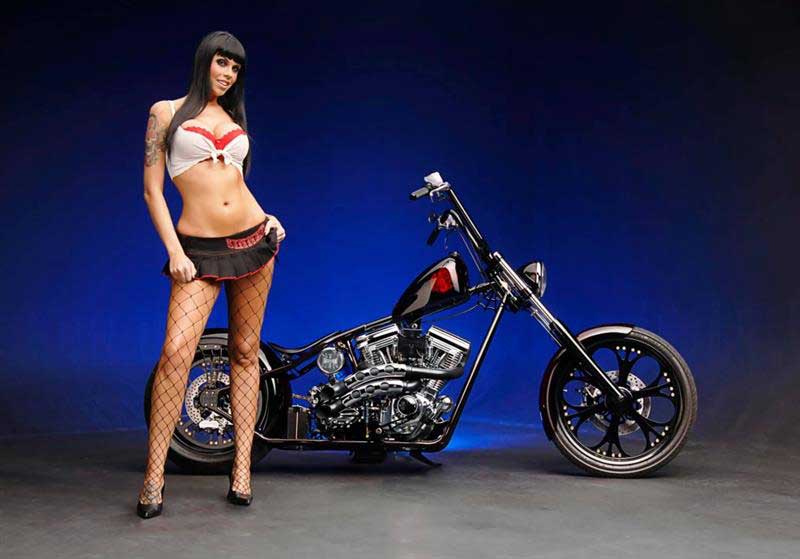
Hey,
This is going to be a good one. We have a ton of material to sort through.
The Bikernet Weekly News is sponsored in part by companies who also dig Freedom including: Cycle Source Magazine, the MRF, Las Vegas Bikefest, Iron Trader News, ChopperTown, BorntoRide.com and the Sturgis Motorcycle Museum. Most recently Quick Throttle Magazine came on board.
Ride fast and free, forever!
Click Here to Read the Weekly News on Bikernet.
Join the Cantina – Subscribe Today.
https://www.bikernet.com/pages/custom/subscription.aspx
Triumph Over Tragedy For Local Motorcycle Company
By Wayfarer |
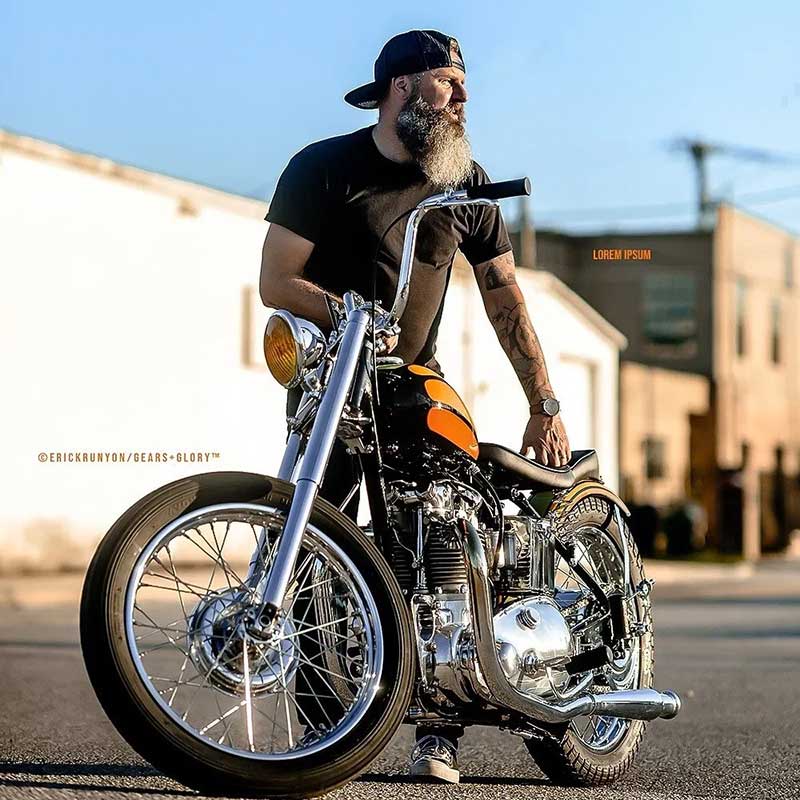
by Kelly Wise Valdes from https://www.ospreyobserver.com
Jared Weems from Riverview is no stranger to adversity. But, as Albert Einstein said, “In the middle of difficulty lies opportunity.” No one knows this better than Weems. The 42-year-old is from a fourth-generation vintage motorcycle enthusiast family. He explained that the passion for all things involving vintage British motorcycles runs in his blood.
Weems was born in Tampa, but ultimately he was raised for the majority of his life in South Tennessee. After high school, he returned to the Tampa area and eventually joined the Army in 2003. He proudly served his country in Special Ops and spent a majority of his military time parachuting from airplanes. It was during this time that he married his wife, Breanne, and they had two children—a son, Austin, 13, and a daughter, Adelaide, 11.
After the onset of some health issues, Weems was medically discharged from the Army in 2018 and moved to Riverview. Unfortunately, his health issues proved to be serious and he was diagnosed with a brain tumor that caused seizures. It was at this time that he hit a low point in his life. “I sold my motorcycles and was unsure where my life was headed,” said Weems.
A pivotal moment took place when a friend came to visit and brought a painting from a famous artist, David Mann. Mann’s work mostly featured Harley Davidson bikes and his paintings were published regularly in Easyriders magazine for more than 20 years. During his lifetime, Mann painted only two pictures of a Triumph bike, and Weems was holding one of those pictures.
“I wanted to build the Triumph bike that Mann had painted,” said Weems. “The painting was something of Mann’s creation—it wasn’t a bike that ever really existed.”
Weems was motivated by his new goal—a ground-up build of the 1952 Speed Twin Triumph from the Mann painting. Weems used this new purpose and his shop as a place of refuge and healing. His intention was to use his savings to build the bike, take it to bike shows, then sell it to recover his costs. The other good news is that Weems’ health had stabilized, and he has now been seizure-free for nearly three years.
Subsequently, his return to Riverview also gave Weems the opportunity to join the staff at The Chapel at FishHawk, currently serving as the director of ministry and leading community-based life skills classes.
It was through this outreach that he met with Cindy Tilley, founder of Forgotten Angels, a nonprofit organization that focuses on helping children that have aged out of the foster care system. Tilley was looking for fundraising ideas to raise money to help build more tiny houses on a property for the foster children.
During the meeting, Weems had an epiphany. “God’s voice said to me, ‘Give them the motorcycle.’”
The ball was rolling, and Weems even had several of the young men from Forgotten Angels help finish the motorcycle build with him. The motorcycle is now being raffled off to support Forgotten Angels.
The raffle is underway until Friday, March 19. Tickets are $25 and can be purchased at www.weemsmotorco.com/raffle. For information about preservation, restoration, repair or custom builds of vintage British motorcycles, visit www.weemsmotorco.com.


